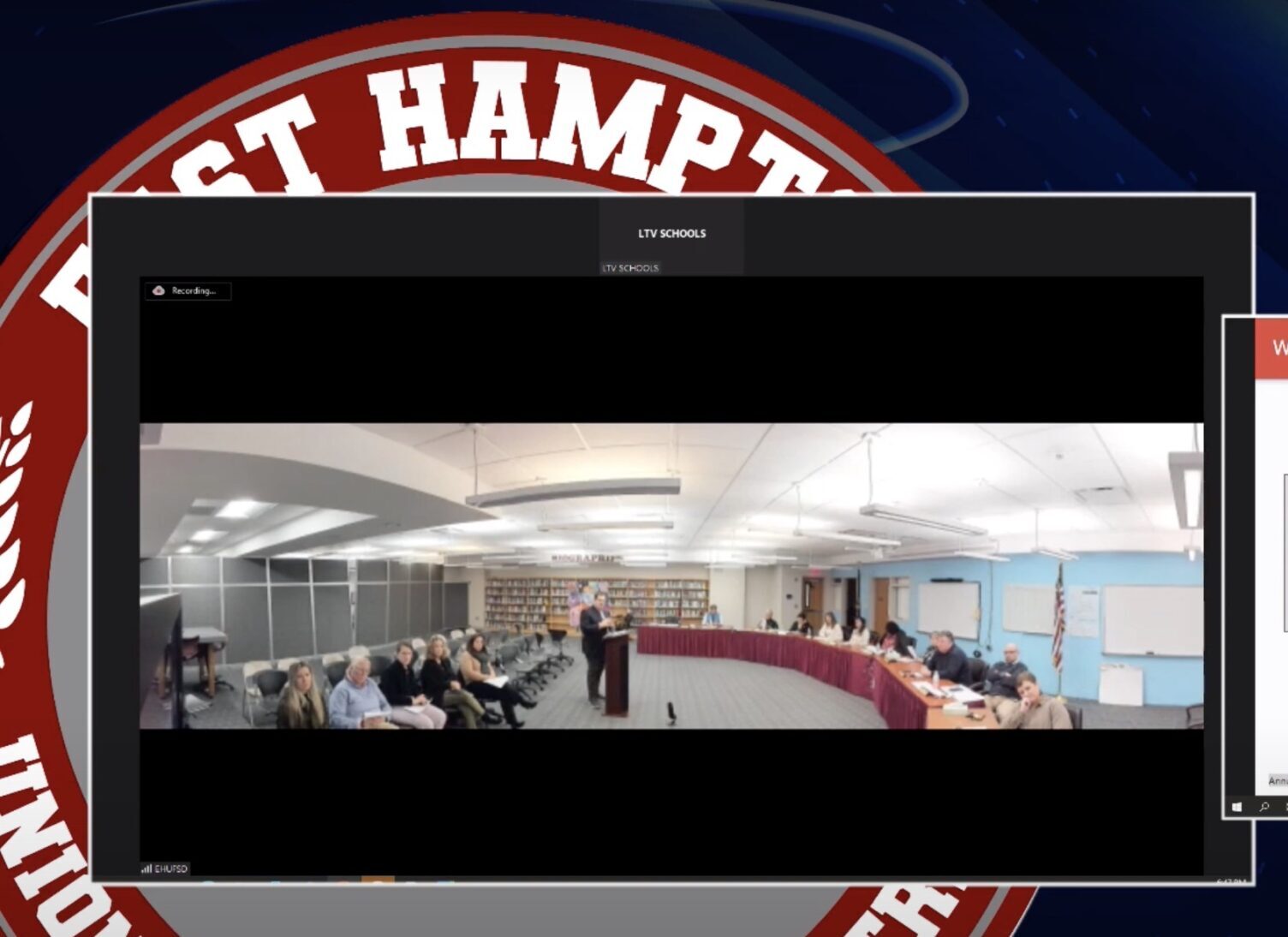
East Hampton School District Assistant Superintendent for Business Sam Schneider foresees budget challenges for the 2023-24 school year, with a rise in health insurance, tax anticipation note interest and retirement system costs, he said at a Board of Education meeting on Tuesday, January 17.
The district participates in the Empire New York State Health Insurance Plan, which is used by many state workers, municipalities and schools. Albany-based employees set the insurance rates in December for the following year.
Schneider said this makes budgeting difficult, especially seeing as full share family coverage rates have increased 497 percent over the past 24 years, from 1999 to 2023. From 2022 to 2023 alone, there is a 12.45 percent increase.
“I know exactly what it’s going to cost us from July through December. The big question mark is what it’s going to cost us from January through June. And the rate increases this year are astronomical,” Schneider said. “When we make our budget, we have to make a good-faith estimate as to what the rates are going to be for the back half of the year.”
The New York State Teachers’ Retirement System, one of the largest pension systems in the United States, has rates that run the same time as a school year, and contribution rates are projected to decrease by three tenths of a percentage point, Schneider said. But the New York State Employees Retirement System, on the other hand, also runs on a schedule dissimilar to the school year, with its fiscal year being from April 1 through March 31.
System contribution rates work off a five-year rolling average, and Schneider said ERS will be going up 2 percent.
“It is a very large increase in actual cash we have to come up with,” he said. “These are mandatory payments that we have to make, and I have to once again guess where the contribution rate is going to go for the last three months of the year.”
All employees of the district are required to participate in one or the other, and contribution rates with school personnel are negotiated in employment contracts. The district is required to pay the product of an employee’s salary multiplied by the relevant contribution rate. Unemployment insurance, workers’ compensation, along with Social Security, which remains steady, also play a part when estimating potential rises in costs in these categories.
Because in Suffolk County districts receive revenue through property tax, the funding from which rolls in between the last week of December through the middle of June, the district uses tax anticipation notes to borrow funds to bridge the gap. While East Hampton has a AAA bond rating — which Schneider said is a rarity among school districts — like with everything else, interest rates have gone up. The district’s current interest rate average, the superintendent for business said, is 2.73 percent, compared to 1.5 percent last year.
Schneider said he has been working on staggered borrowing to hopefully keep interest payment totals lower at the end of each school year. The district paid $161,250 in interest when borrowing $15 million during the 2021-22 school year, and $408,889 on $16 million last school year. Schneider said he’s estimating $450,000 in interest to be paid this school year.
On top of this, insurance rates for most projects has also risen 10 to 15 percent.
“Where the issues lie for us is in the big-ticket items — the insurance and contractual obligations,” Superintendent Adam Fine said.
Schneider said without knowing Eastern Suffolk BOCES capital calculations and state aid funding, it compounds the problem when trying to map out a budget months ahead of time.
“For me,” board member Jackie Lowey said, “it’s always sensible to have as much of the big picture out front.”
At the February 7 Board of Education meeting, budgeting centering around the superintendent’s, assistant superintendent’s and business offices will be discussed, along with benefits and debt service. High school, middle school and elementary school building budgets, and transportation and facilities, will be examined March 7. The March 21 meeting will center around special education, athletics, extra curriculars and English as a new language budgets, along with revenues and the tax levy. The board will hold a discussion on final budget changes on April 4, and is scheduled to adopt the budget on April 18.
A budget hearing will take place May 2, and the budget vote will be held May 16 from 1 to 8 p.m. in the board of education room.